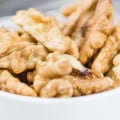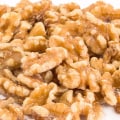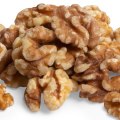Brian Hammons, president of the Stockton-based company, the world's leading commercial processor of black walnuts, told the News Leader Thursday that the company expects to buy around 15 million pounds this year. Between 20,000 and 40,000 pounds of that amount can come from deliberately planted orchards, but Hammons Products depends on the general public to harvest the rest of nature. While Hammons Products will have more than 200 husking sites in 11 states this fall, 65 percent of the harvest generally comes from Missouri, and Springfield and the surrounding area is No. A harvest of 15 million pounds would be below the annual average of approximately 24 million pounds.
The western portion of the region on which Hammons Products is based is expected to perform slightly less than last year, while the eastern portion is likely to have a slightly better year compared, Hammons said. The company is quite well positioned compared to previous years' harvests. You'll want to make as few trips as possible and take as many black walnuts as you can on a trip. Stations are open on their own schedule, so call before you go for details of hours and if they work during rainy days.
If they don't have a cover, the machine gets wet and slips. Collecting your black walnuts is the first job you need to do before going to the black walnut shelling station. You can pick up nuts by hand, Nut Wizard tools or Bag A Nut tools. The three best ways to store your nuts are vans with beds, trailers with sides, or buckets.
The big difference is that you will have to shovel, (take your own), the nuts loose in the machine if they are loose. The advantage is quantity and ease. Can fit more loose nuts in a truck than in buckets. Shoveling is more difficult than emptying buckets.
Bagging black nuts and putting them in the truck or trailer also works. Bags (depending on their weight) may be easier to unload than loose black nuts and the truck may contain more in bags than in buckets. Hammons Products also sells ground shell for use in abrasive cleaning and filtration applications; dark meats or walnut meal that are unfit for human consumption are sold for animal feed or used to create black walnut oil. Wild black walnuts only have about 15 to 20 percent flesh per nut, but cultivated varieties have 30 percent walnut flesh or better and are easier to peel.
Letting it air dry takes longer, of course, but that more colorful walnut tree has an even greater value for carpenters. As wild black walnuts fall from trees, local people could literally have “money lying on the ground,” according to nut processor and retailer Hammons Black Walnuts from Stockton, Missouri. Black walnuts are delicious and nutritious, but the time, cost, and effort to peel, clean, and peel keep walnuts from taking their proper place in the market. Black walnuts in shell from Argires Snacks have been specially sourced in and around the state of Missouri, in the Midwest.
Air-dried black walnut wood has green, gold and bronze veins, in addition to the usual browns and purples that dominate kiln-dried wood. Pickers are encouraged to pick black walnuts during the first few weeks of October, when the walnuts have recently fallen off and their shells are mostly green. Hammons said his target for this year's harvest was 20 million pounds, and many shelling station operators reported a lot of black nuts on the trees, and walnuts are already falling. Otherwise, compost them for a year to break down the chemical that inhibits the growth of some plants around black walnuts.
He also said that there is a value to the walnut shell that trappers use, since the strong scent typical of black walnut tends to mask any human scent that may be present in a trap. The walnuts should be brought as they are found, he said, without the need for preparation because the shelling machine removes the green outer shell. The bugs at the local wildlife rehabilitation center are going to be happy with all the nuts I bring them. Black walnuts are full of great flavor thanks to their hard shells, which preserve the nut in a much better way.
. .


